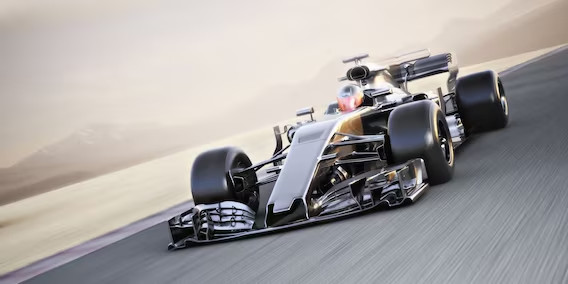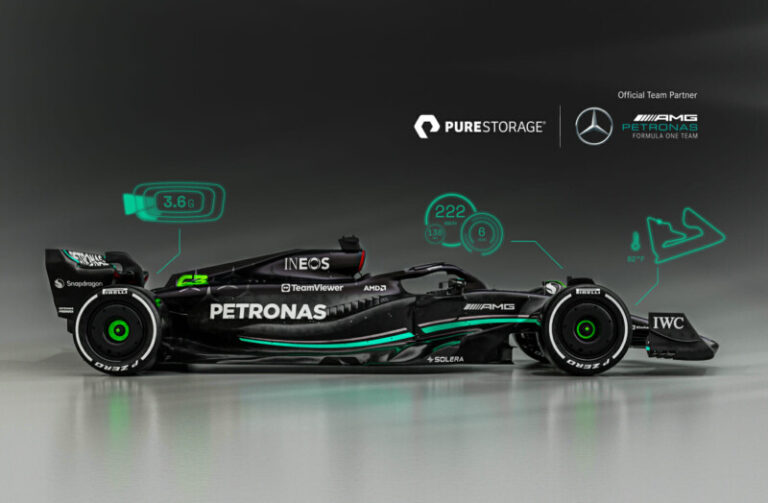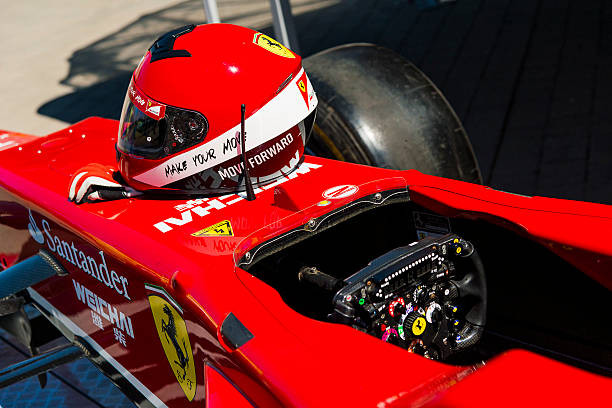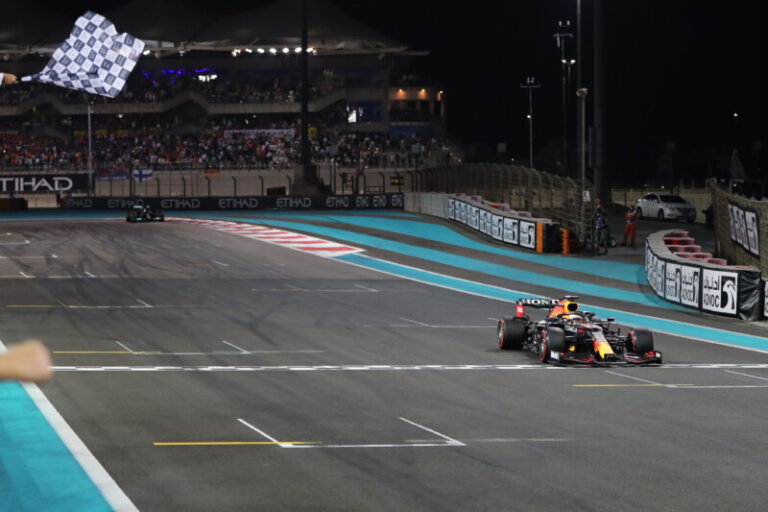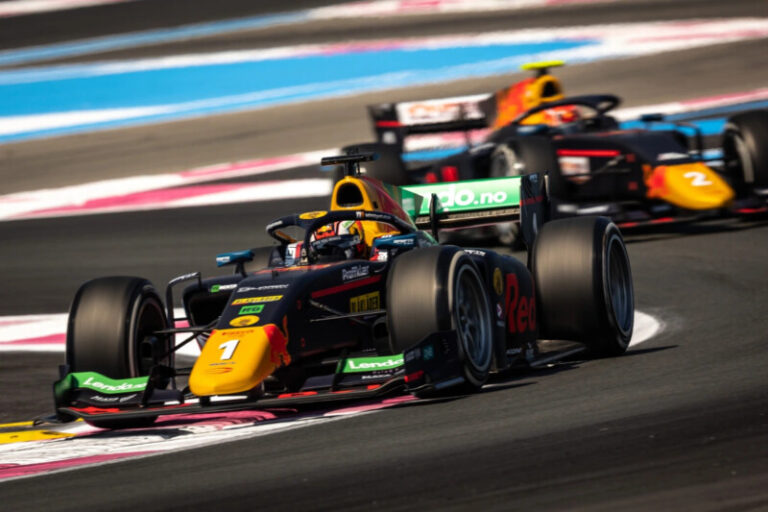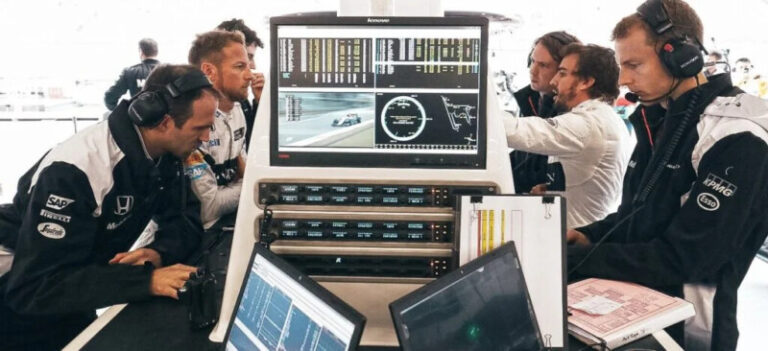How Fast Are F1 Cars Today?
Formula One cars are the fastest regulated racing cars worldwide. Their extraordinary speeds showcase the remarkable capabilities of modern automotive technology.
Advancements in F1 designs and safety regulations over the decades have significantly impacted the top speeds of these vehicles. Understanding this evolution helps appreciate just how fast F1 cars can go today.
So how fast are F1 cars in the present day? Let’s find out!
Current Top Speeds of Formula One Cars
The current generation of F1 cars achieve staggering speeds, pushing the boundaries of automotive performance.
On long straight line sections of a circuit, F1 cars can regularly hit peak speeds of around 233 mph (375 km/h). This demonstrates the immense power generated by their hybrid turbocharged engines and performance optimizations.
But straight line velocity alone doesn’t capture the full performance envelope of F1 cars. Their average speed around complete race circuits is a better indicator of their outright pace.
During a typical race, F1 cars maintain average speeds of 185-200 mph (298-322 km/h) consistently. This is a testament to their incredible acceleration, braking performance and high cornering speeds.
The technical regulations in F1 ensure severe restrictions on aerodynamic aids and engine power. Yet the best F1 constructors find ways to maximize every bit of performance from the chassis and power unit within the regulations.
Factors like low weight, advanced aerodynamics and optimized traction contribute to the blazing pace of F1 cars. Their performance pushes the boundary of what is possible on four wheels.
At the same time, electronic driving aids like traction control, launch control and anti-lock brakes allow drivers to put the power down and brake later into corners. This makes the cars more stable and easier to control at mind-bending speeds.
Make no mistake – F1 cars are the fastest circuit racing vehicles in the world. Their raw pace perfectly complements the exclusive status of Formula One as the pinnacle of motorsports technology.
Key Technical Innovations That Pushed F1 Car Speeds Higher

Formula One engineers have consistently innovated to make cars go faster while remaining safe. This relentless technology push has been a core catalyst for the speed evolution of F1 through decades of racing.
Here are some of the most important technological innovations that have increased top speeds over time:
Advanced Aerodynamics – Shaping the chassis and appendages to generate maximum downforce while reducing drag has been key. Elements like front and rear wings, diffusers, sidepods and barge boards help F1 cars stick to the track for higher cornering speeds.
Powerful Hybrid Powertrains – The current 1.6 liter turbocharged hybrid V6 engines produce around 1000 horsepower, while being extremely fuel efficient. Their electric power boost and torque fill help achieve phenomenal acceleration.
Sophisticated Suspension Systems – Modern F1 cars employ complex suspension geometries for maximum mechanical grip and stability. Technologies like hydraulic actuators allow teams to fine tune suspension responses. This is crucial for maintaining control with delicate aero balance at high speeds.
Add to this the use of exotic materials like carbon fiber composites to reduce weight and increase chassis stiffness. Plus innovative electronic control systems that optimize every sub-system. These showcase how F1 engineers have integrated cutting-edge technologies to build the fastest cars on the planet.
How Regulations Have Shaped Maximum Speeds in Formula One
While seeking higher top speeds, F1 engineers don’t have complete freedom. Strict regulations by the FIA (F1’s governing body) enforce limits on overall car performance and speed.
The regulations cover maximum power outputs from the engine, car weight, dimensions, aerodynamic aids and even transmission gear ratios.
For instance, F1 engines are restricted to peak rev limits of 15,000 RPM and fuel flow rates of 100 kg/hour. Strategically chosen gear ratios put a cap on top speeds.
The FIA regularly updates technical regulations to ensure speeds don’t increase infinitely for safety reasons and sportsmanship. Teams then channel their innovation skills into maximizing car performance within the regulatory constraints.
This pushes them to find creative solutions like:
- Using lightweight materials and efficient designs to reduce car weight within the minimum limit. This improves acceleration and braking.
- Developing aerodynamic elements that work within maximum permissible dimensions to boost downforce for faster cornering.
- Optimizing power unit packaging around the gearbox for tighter integration and lower losses.
- Fine tuning engine mappings to deliver optimal power and torque within the rev range cap.
The quest for more speed will continue with changing regulations. But any gains will come from smarter designs and superior execution.
Critical Safety Measures for Formula One’s Incredible Velocities

The breathtaking speeds of F1 cars present severe safety challenges. The FIA mandates strict safety norms for chassis integrity and driver protection:
Safety Cockpit Structure – The carbon fiber monocoque chassis needs to withstand massive impact loads. The cockpit is designed as a safety cell cocooning the driver.
Reinforced Bodywork – The nose cone, side pods and other body panels are made of reinforced composites to absorb crash impacts. The roll hoop structure behind the driver plays a key role as well.
Safety Harness – A 6 to 7-point safety harness secures the driver tightly in case of a crash. The harness withstands forces of up to 45G during an impact.
Fire Protection – Flame-retardant suits, balaclavas, gloves and shoes for drivers are mandatory. Fire extinguishers around the cockpit are also required.
Helmets – Drivers wear specialized helmets made of composite materials like carbon-fiber and kevlar. These feature energy absorbing EPS foam and HANS (Head and Neck Support) devices.
Electronic Aids – A speed limiter, real time telemetry systems and trackside warning systems ensure speed regulation compliance and situation awareness.
The combination of these robust safety measures allows drivers to survive violent crashes at top speeds. Safety remains the number one priority, pushing continual improvements with changing F1 technology.
The Exciting Future of Formula One Car Technology
As an avid F1 enthusiast, I eagerly look forward to the innovations that will shape the future of these incredible vehicles.
Some technologies on the horizon that could reshape F1 speeds and racing include:
- More powerful and thermal efficient combustion engines, like proposed 4-stroke engines
- Enhanced electric power components, energy recovery and deployment systems
- Active aerodynamics with movable aero surfaces to alter downforce and drag in real-time
- Improved hybrid powertrain integration and packaging for optimized power transfer
- Use of electronic driver aids for traction, launch and stability to be optimized
- Adoption of biofuels, synthetic fuels and hydrogen to reduce environmental impact
- Next-gen safety enhancements like augmented driver vision and AI-assisted controls
- Better engine and chassis data analytics using AI/ML for design and racing improvements
Exciting innovations like these will push the performance envelope further while enhancing driver safety and the spectacle of wheel-to-wheel racing.
As an F1 devotee, I keenly await the next evolution of designs and technology that will enable faster cars. The pursuit of speed drives the spirit of F1 racing for engineers and fans alike.
FAQs
How much do F1 cars cost?
Top F1 cars today have total budgets exceeding $500 million per season, when you include R&D. An actual F1 car’s construction can cost over $10 million alone. Their cutting-edge designs and exotic materials contribute heavily to costs.
How are F1 cars different from other professional race cars?
F1 cars are purpose-built for the pinnacle of circuit racing, with more powerful engines, greater downforce and the fastest speeds over a race distance. Series like IndyCar and Le Mans emphasize other attributes besides peak speed, like durability and fuel efficiency.
What is the environmental impact of F1 racing?
F1 engines and races do consume substantial fuel and emit pollutants. But new hybrid power units, biofuels and carbon reduction plans are helping minimize the ecological impact. F1’s role in driving auto innovations also accelerates environment-friendly technologies.
How can F1 be made more accessible to the public?
Lower ticket pricing, live streaming races, F1 fan festivals and open paddock events can help grow engagement worldwide. More outreach to youth like the F1 in Schools initiative creates passion from a young age.
What unique challenges do F1 engineers face?
F1 engineers constantly push boundaries of speed while meeting tight regulations. They integrate complex systems in the tight confines of an F1 car, using data-driven design and customer team support. The limited testing opportunities make development extremely difficult.
What are the biggest events in F1?
The Monaco GP, Singapore GP, Abu Dhabi GP and Belgian GP stand out for their glamor, night racing and challenging tracks. Of course, the Italian GP at Monza and British GP at Silverstone have incredible heritage value as the only ever-present events on the F1 calendar.
I hope these answers provide some useful insight into the breathtaking performance of Formula One cars. The quest to refine designs and innovate technologies for more speed will continue captivating engineers and fans alike.
Conclusion
Formula One cars represent the pinnacle of automotive performance. Their incredible speeds averaging 200 mph during races showcase astonishing momentum on four wheels.
Advancements in designs like aerodynamics, engines, suspensions and electronics have enabled the evolution of F1 car speeds over decades of racing. Strict regulations play a key role in capping maximum velocity for safety while driving technical innovation.
Cutting-edge safety measures like protective driver cockpits, advanced helmets and fireproof suits allow survival in dangerous crashes at top speeds.
The future holds even more promise, with innovations in power units, active aero and autonomous controls on the horizon. I keenly await the next generation of F1 cars that will stretch the boundaries of speed and technology further.
As an ardent F1 aficionado, the allure of witnessing the world’s fastest cars driven by skilled drivers on iconic circuits still captivates me immensely. The pursuit of speed that drives F1 advancement will continue to enthrall auto fans worldwide in the decades to come.

